
Decorating for energy involves utilizing the mathematics of nature. I generally just use the blueprint of a circle or an ellipse which, despite its simplicity, is enough to bring Energy into an environment. Sometimes you might hear of the Golden Proportion as an example of the mathematics of nature. It is good to know about this mystical number when we think about our world. In Understanding the Golden Proportion, I will bring some simplicity to its complexities.
It seems as the Golden Proportion has a lot of synonyms: the Golden Mean, Golden Ratio, Golden Cut, Golden Section. Sometime the word, Golden is substituted by the word, Divine. People use them interchangeably but not all these words are the same. I want you to know the difference between a proportion and a ratio and understand the meaning of the Golden Cut and Golden section.
Making Ratios and Proportions Simple
When I was teaching math to Special Needs students, I found that the more I could put these abstract notions into pictures, the better the students understood the concepts. So it is best to do the same when learning ratios and proportions. One of the best examples to illustrate these concepts is the dollhouse my husband and I built for our granddaughter. We wanted to make everything in proportion unlike the folk art toy store above.
When we were constructing it, we had to concentrate on the proportions to get everything to look real. Usually we could just buy the molding, baseboards and furniture already properly sized. Occasionally, however, we had to use some mathematical skills whenever I sculpted something from scratch.
Our Dollhouse Ratio
A typical doll house is 1/12 the size of a human house. [1] So for every foot in human size, an inch is substituted for the doll house. A six-foot human couch becomes six inches in a dollhouse.
The problem came in when I started working in with smaller items that were not in wholes numbers. One day I decided to make a pie. Now pies are usually baked in a 9″ pie pan. I could intuit that a 9 inch pie would be ¾ inch in doll house size.
The problem for us came when I decided to sculpt even smaller items in the human world like an orchid flower, a dish of spaghetti or a doughnut.
To handle these conversions, we had to go back to some rudimentary high school math concerning ratios and proportions. In learning this process, you will be more apt to understand the golden proportion. As much as possible, keep real life examples of math problems as you work the numbers. Then you won’t run away screaming.
A Ratio
Before understanding the term proportion, it is necessary to understand the term, ratio. A ratio is a comparison of two numbers. Looking at the dollhouse, we see that 1 inch is compared to 1 foot or 12 inches. We can write that comparison in many ways:
- 1 inch is to 1 foot
- 1 inch:1 foot (which is read out loud as, 1 inch is to 1 foot)
- 1 inch/1 foot (which is read out loud as, 1 inch is to 1 foot)
- 1″ is to 12″
- 1″:12″ (which is read out loud as 1 inch is to 12 inches)
- 1″/12″ (which is read out loud as 1 inch is to 12 inches)
Proportions
A proportion is an equation with two ratios that are equal to each other. When we write them out, they are an equation. Think of the doll house. The scale is 1 inch to 12 inches. So a 6 foot human couch (72 inches) translated to dollhouse math would be 6 inches and would present itself in a proportion in many ways.
- 1 is to 12 as 6 is to 72
- 1/12 = 6/72 (which is read as “1 is to 12 as 6 is to 72)
- 1:12 = 6:72 (which is read as, “1 is to 12 as 6 is to 72)
- 1 inch is to 12 inches as 6 inches is to 72 inches
- 1″ is to 12″ as 6″ is to 72″
- 1″/12″ = 6″/72” (which is read as, “1 inch is to 12 inches as 6 inches is to 72 inches”)
- 1″:12″ = 6″:72″ (which is read as, 1″ inch is to 12 inches as 6 inches is to 72 inches’)
Proportion Problem Solving
When I was using Fimo clay to create an orchid plant for the dollhouse, I had to use an equation..Each flower was 4 inches in diameter in human terms. How could I find the mini number to create the flower proportionate to the real world.
I wrote out the proportion which was:
1 inch is to 12 inches as the-unknown-number of inches is to 4 inches.
1:12 = ?:4 (Note that in mathematical terms, the outside numbers, 1 and 4 are called extremes and the inside numbers, 12 and the unknown number represented by x are called means. This is useful to understanding the golden mean.)
Then I had to change it to an equation with fractions to find the unknown number. In an equation, the unknown number is always written as x instead of a ?, a question mark. So your proportion to find the mini orchid blossom will look like this:
1 = x
12 4
I cross multiplied to solve the equation.
x times 12 = 1 times 4
12 times x = 4
x = 4/12 or 1/3 or.333…
When I solved the equation, the unknown number or x was .33 inch or between 1/4 and 1/2inch. That was the number I used in sculpting the flower.
Using Our Knowledge of Proportion to Understand the Golden Ratio
The golden ratio has been found extensively in nature and has been used for centuries by artists. It can be expressed geometrically, as a fraction or as an approximation of a number. To find the number, we can take a line and cut it at a specific point.
That cut is at a point where the whole line is to the the larger cut of the line as the larger part of the line is to the smaller cut of the line. That cut is called a golden cut.
Just a Warning
Decorating with the Golden Ratio
The golden ratio is not of this earth even though we see the geometry in galaxies, hurricanes, roses or the curl of an eye lash. That is because the golden number, like pi, is an irrational number, a where the number goes on for infinity without repeating numbers..
For example:
1.6180339887 4989484820 4586834365 6381177203 0917980576 2862135448 6227052604 6281890244 9707207204 1893911374 8475408807 5386891752 1266338622 2353693179 3180060766 7263544333 8908659593 9582905638 3226613199 2829026788… You could go on for another 10,000 decimal places and for infinity, never repeating the same patern.
To understand the overwhelming idea of a decimal going on to infinity, think of this scenario: If each number or set of numbers were given a letter correspondence, (eg. a = 1, k = 11)) we would find in infinity everything that was ever written. You would find the Constitution and all its drafts, my Aunt Rose’s cookie recipe, every love letter ever sent, Julia Child’s cook books, the text to your ex you thought was deleted, your first grade report card, War and Peace with all its revisions, every political speech.
It would have every NY Times article, every essay written by every elementary child in the world, every Dear John letter, all the CIA’s non redacted files, every person registered to vote and every ballot – EVERYTHING ever written.
That gives you a partial idea of infinity.
Practical Uses
Therefore, we can see how difficult it would be to use the golden ratio in decorating as a number. The golden proportion is from another world. Fortunately we have a system that can approximate it on an earthly plane. That is the Fibonacci series:
1, 1, 2, 3, 5, 8, 13, 21, 34…………
We can do proportions by using those numbers like 5 is to 8 as 8 is to 13. Somewhat useful if you are trying to figure out where place a chair on a 13 foot wall. Fun to play with. These numbers, however, are more useful in building a room rather than doing interior design. That is why I use an easier approach based on a circle to bring harmony to my decorating. See Let the Eyes have a Pleasurable Dance, Lesson VIII, Part A.
Musing on the Golden Ratio
Despite my use of the circle as a basis for decorating for harmony, I love musing on the golden ratio and I reference it often in my blogs and book lessons. I can just kind of feel it as the mystical glue to the universe. I know it determines the proportions of my body right down to the geometry of my DNA. It is the heart of sacred geometry.
Plato and many of his peers believed that geometry existed before creation and when matter was created it simply filled in the geometric templates. The golden ratio was major blueprint as evidenced by the many flora and fauna that sport that scaffolding. It is a beautiful number which makes me understand why da Vinci’s friend, Luca Pacioli changed the word “golden” to the word “divine.”
***
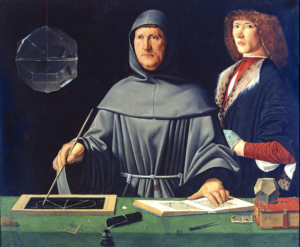
Footnote:
[1] A Barbie dollhouse scale is 1 foot to 6 inches.
[2] Phi is named after the great Greek sculptor Phidias who designed the friezes along the Parthenon.
***
There are two parts to this website, The Lessons, which are more difficult in concept, and the blogs, which are lighter in nature. Blogs that you might enjoy with the same theme as Understanding The Golden Proportion are:
Lesson that relate to this blog are:
- Finding Energy Through Geometric Patterns, Lesson III
- Let the Eyes Have a Most Pleasurable Dance, Lesson VIII, Part A.
Please note that my website allows you to leave comments at the end of the blogs but not at the end of each lesson. If you have a comment or question about a lesson, you may email me at ruta@rutas-rules.com

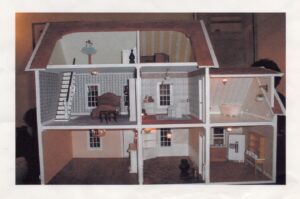


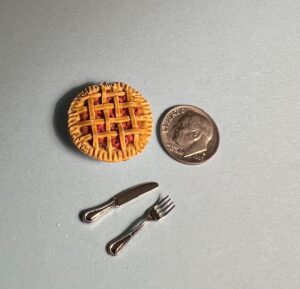
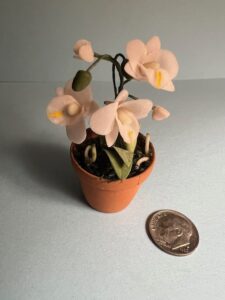

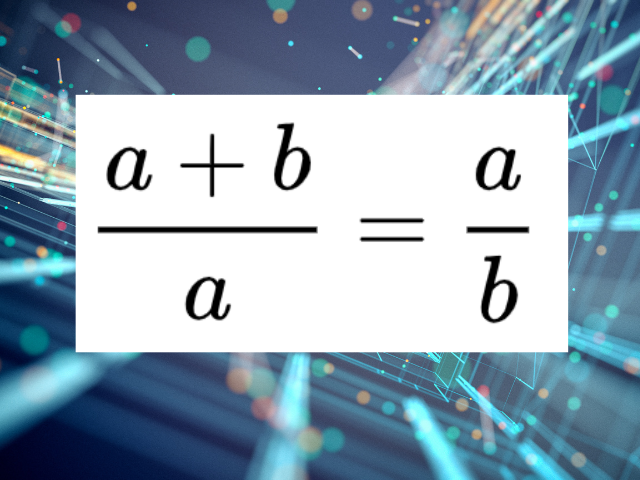
Leave a Reply